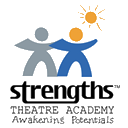How to Read Body Language?
“Actions speak louder than words,” a phrase we’ve all heard countless times. It’s a saying that highlights the undeniable power of non-verbal communication and the critical role body language plays in our daily interactions. The ability to read body language can be a game-changer in both personal and professional settings, enabling you to better understand people’s thoughts and emotions, and consequently, improving your communication skills. In this article, we will delve deep into the art of deciphering body language, providing you with valuable insights that can boost your confidence, and interpersonal relationships, and even enhance your career prospects.
The Importance of Understanding Body Language
Before we dive into the intricacies of reading body language, let’s first understand why it’s so crucial. Our words are just a fraction of the messages we convey; the majority of our communication happens through non-verbal cues. When you master the skill of reading body language, you can:
2. Enhance Relationships: Strong personal and professional relationships are built on understanding and empathy. Reading body language can help you connect with others on a deeper level, making your relationships more fulfilling and productive.
3. Boost Career Opportunities: In the professional world, effective communication is paramount. Knowing how to read your colleagues, clients, or superiors can give you a competitive edge, helping you make better decisions and progress in your career.
Visit: tips for active communication
4. Build Confidence: When you can accurately interpret the signals people are sending, you become more confident in your social interactions, as you know what to expect and how to respond.
Now, let’s explore the key aspects of reading body language in detail.
- Eyes: The eyes are often called the “windows to the soul.” They can reveal a person’s true emotions. For example, narrowed eyes can indicate suspicion or anger, while dilated pupils may signal interest or attraction.
- Mouth: The mouth can convey a range of emotions. A smile typically indicates happiness, while a frown may signal sadness or displeasure. Be attentive to microexpressions, which are brief, involuntary expressions that can reveal concealed emotions.
- Eyebrows: Raised eyebrows can indicate surprise, while furrowed brows suggest confusion or concentration.
Visit: benefits of eye contact
- Open Palm: An open palm is a sign of honesty and openness. It can also indicate a willingness to cooperate.
- Crossed Arms: Crossing one’s arms can be a defensive posture, suggesting discomfort or disagreement. It’s essential to consider the context and other cues when interpreting this gesture.
- Leaning In: When someone leans in during a conversation, it usually indicates interest and engagement. They are actively listening and eager to participate.
Visit: importance of assertive communication
- Upright Posture: Standing or sitting up straight generally conveys confidence and attentiveness. It can also signal authority.
- Slouching: Slouching or a hunched posture may indicate tiredness, boredom, or a lack of confidence.
- Mirroring: People often unconsciously mimic the body language of those they are interacting with. If someone is mirroring your movements, it’s a sign of rapport and connection.
If you’re eager to master the art of reading body language and improve your communication skills, consider enrolling in expert run personality development classes. The expert instructors will guide you through the nuances of non-verbal communication, helping you unlock the secrets of body language for personal and professional growth.
- Personal Space: Be aware of someone’s personal space boundaries. If they step back or lean away during a conversation, it could indicate discomfort or a desire for more space.
- Intimate Space: Invading someone’s intimate space without permission can make them feel uncomfortable. Respect boundaries to maintain positive interactions.
Visit: ways to show confidence in communication
Conclusion
In a world where effective communication is key, understanding how to read body language can be a game-changer. By deciphering the non-verbal cues people send, you gain insights into their thoughts, emotions, and intentions, giving you a competitive edge in personal and professional interactions.
So, remember, the next time you’re in a conversation, pay attention to the subtle cues — the raised eyebrow, the open palm, the lean-in, or the crossed arms. Mastering the art of reading body language is not only a fascinating journey but also a path to becoming a more perceptive, empathetic, and successful communicator. Don’t miss out on the opportunity to enhance your interpersonal skills; start your journey of learning “How to Read Body Language” today.
Originally published at http://personalitydevelopmentskills.wordpress.com on November 1, 2023.
